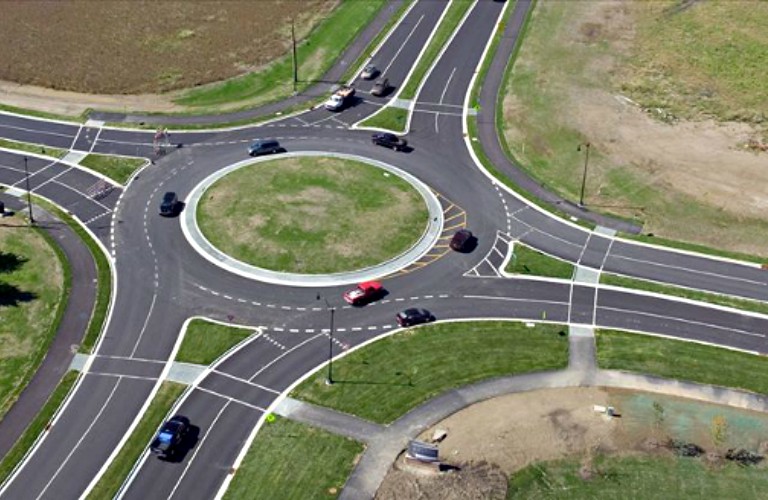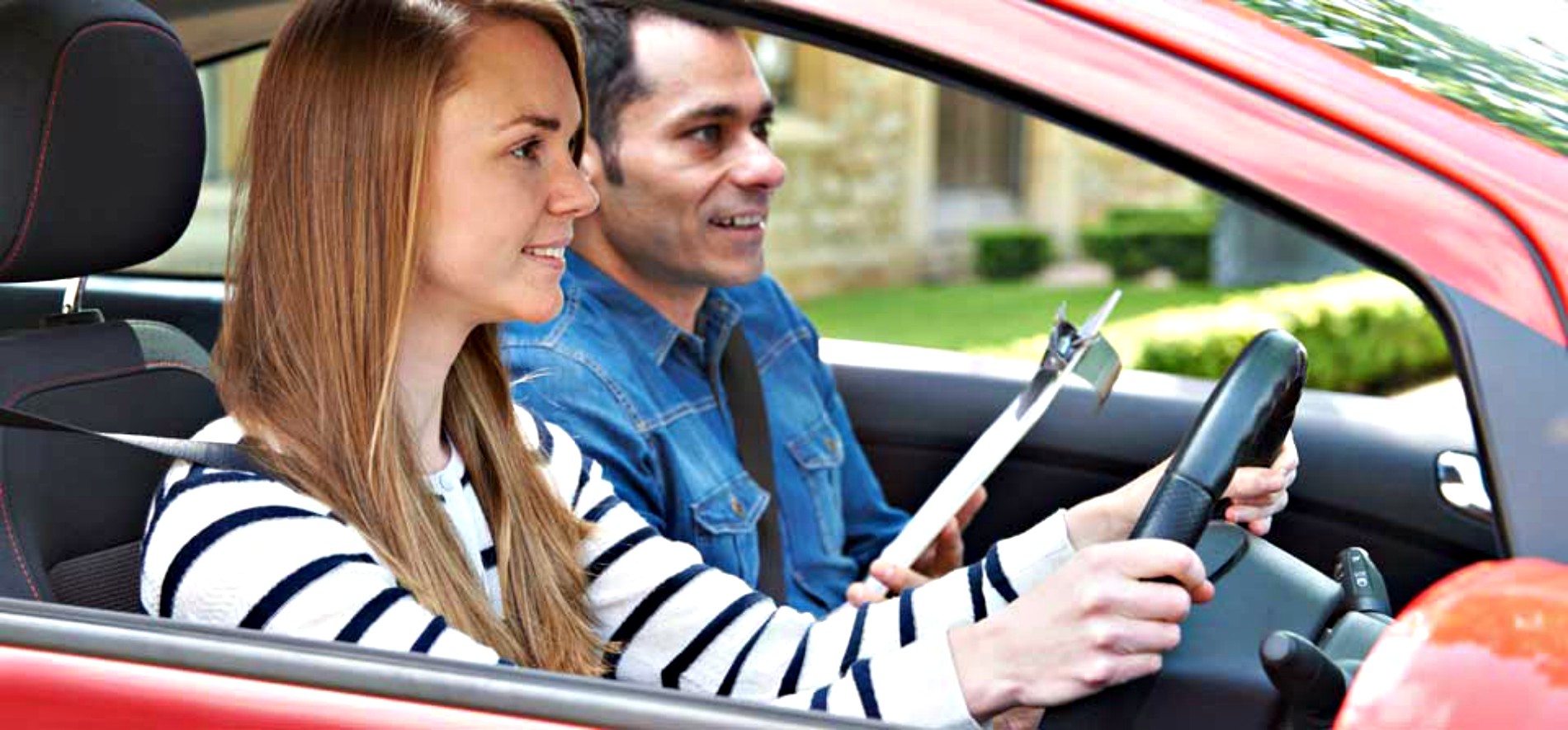When learning to drive, roundabouts can be a hard obstacle to overcome as there are many things you need to think about. However, do not stress, as we have put together this guide to ensure you are King or Queen of the roads.
Why do we have roundabouts?
Roundabouts have been implemented into the road structure with the purpose being when two, or more, busy roads intersect, something must give. They are designed to keep traffic moving, ease congestion and speed up journey times – these are also considered safer than traditional junctions and crossroads.
Why do we have roundabouts?
Roundabouts have been implemented into the road structure with the purpose being when two, or more, busy roads intersect, something must give. They are designed to keep traffic moving, ease congestion and speed up journey times – these are also considered safer than traditional junctions and crossroads.

How do roundabouts work?
- Approaching traffic will usually give way to traffic already on the roundabout – this always comes from the right.
- Wait for a safe gap, then you can join the flow of traffic and continue in the correct lane until reaching your exit.
- Before leaving the roundabout, make sure you signal as you pass the exit just before the one you need.
- Regular roads and larger roundabouts consist of different lanes, the same applies when joining a roundabout, you must be in the correct lane to access your chosen exit.
Approaching the roundabout and picking the correct lane
Here are the golden rules to keep in your head when approaching a roundabout, take notes…
Turning left
- This usually means the 1st exit, so you need to always be in the left lane when approaching and for the entire time you’re on the roundabout.
- Keep your left indicator on and leave via the first exit.
Continuing straight ahead
- When your instructor or test examiner says, “head straight over the roundabout”, this means they want you to travel straight on through the roundabout.
- Depending on the size of the roundabout, you’ll often be able to use the left-hand lane to do this manoeuvre. However, keep in mind, some roundabouts only allow you to use the left-hand lane for left turns only. Look at your surroundings, particularly the signs.
- Make sure you signal as you pass the exit just before the one you need.
Turning right
- In this scenario, you will need to travel in the right-hand lane.
- Continue in the right-hand lane until you pass the 2nd exit. Check your main mirror, then your left door mirror and signal left.
- You’ll need to move in the left lane before exiting, so checking your blind spot is essential with a glance over your left shoulder.
- Once you’re in the left lane you may exit the roundabout.
Here are the golden rules to keep in your head when approaching a roundabout, take notes…
Turning left
- This usually means the 1st exit, so you need to always be in the left lane when approaching and for the entire time you’re on the roundabout.
- Keep your left indicator on and leave via the first exit.
Continuing straight ahead
- When your instructor or test examiner says, “head straight over the roundabout”, this means they want you to travel straight on through the roundabout.
- Depending on the size of the roundabout, you’ll often be able to use the left-hand lane to do this manoeuvre. However, keep in mind, some roundabouts only allow you to use the left-hand lane for left turns only. Look at your surroundings, particularly the signs.
- Make sure you signal as you pass the exit just before the one you need.
Turning right
- In this scenario, you will need to travel in the right-hand lane.
- Continue in the right-hand lane until you pass the 2nd exit. Check your main mirror, then your left door mirror and signal left.
- You’ll need to move in the left lane before exiting, so checking your blind spot is essential with a glance over your left shoulder.
- Once you’re in the left lane you may exit the roundabout.
 Roundabout considerations
Roundabout considerationsMirror: Firstly, you check your centre mirror, then the relevant door mirror – if you’re turning left, check the left door mirror and vice versa with the right turn. In your driving test, an examiner will make sure you are explicitly carrying out your mirror checks – some people find it helps them to audibly convey they are checking their mirrors by saying “mirrors” when applicable to prove they are to their examiner.
Signal: When changing lanes at any point, signal as soon as possible after checking your mirrors. However, when approaching a roundabout, if you are travelling straight over you don’t need to signal your direction of travel.
Position: On the roundabouts, it will clearly display road markings or detailed road signs to make it clear which lane you need to be travelling in.
Speed: We suggest taking roundabouts at a good speed – not too slow but not too fast, as you are not travelling in a straight line, so need to be careful of bends, but also need enough speed to be able to join the flow of traffic.
Look: You should not join a roundabout without looking both ahead and to your right-hand side.
How could you fail your test at a roundabout?
Hesitating at a roundabout
Speed: We suggest taking roundabouts at a good speed – not too slow but not too fast, as you are not travelling in a straight line, so need to be careful of bends, but also need enough speed to be able to join the flow of traffic.
Look: You should not join a roundabout without looking both ahead and to your right-hand side.
How could you fail your test at a roundabout?
Hesitating at a roundabout
- If you miss a clear-cut, safe opportunity to join a roundabout, you’ll be holding up traffic for no good reason.
- A short delay – this can be marked as a driver fault.
- A long delay – this may be marked as fail as it counts as a serious fault.
- You will not fail your test if you go into the wrong lane, however, how you react to this mistake is what will set you apart from passing or failing your test. If you still use your mirrors, checks, speed and signals to get back on track and you’ll be fine.
- If you are cutting across lanes to exit on a right turn, you’ll be heavily penalised for not signalling – this is a very risky manoeuvre.
- If you were to leave your signal on for too long, this can confuse other drivers around you. This could be classed as a driver fault or a complete fail depending on how long you leave the indicator on for.

We hope this guide gives you a helpful insight into roundabouts and the best of luck with passing your driving test!
For more CarCliq guides click here.
Struggling to remember your stopping distances for your Theory Test? Click here.
For more CarCliq guides click here.
Struggling to remember your stopping distances for your Theory Test? Click here.